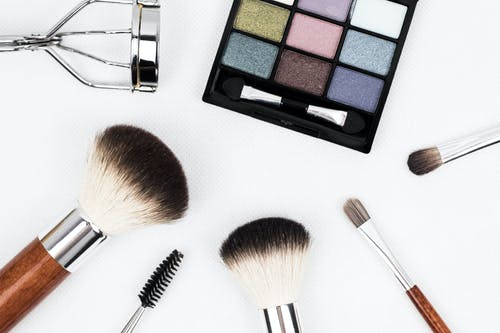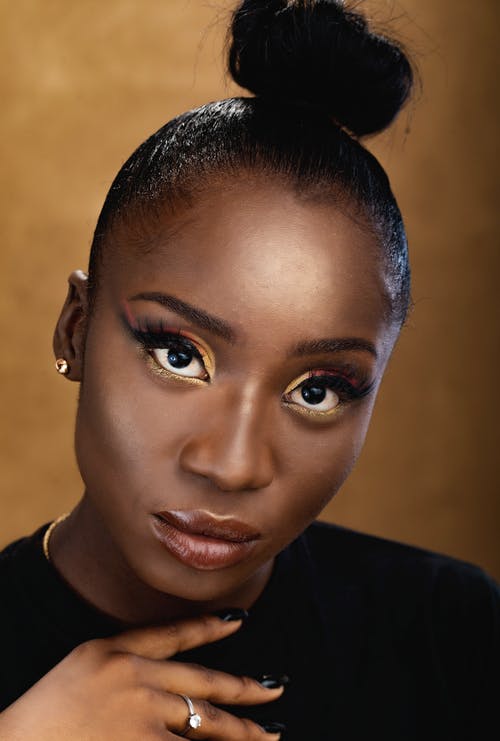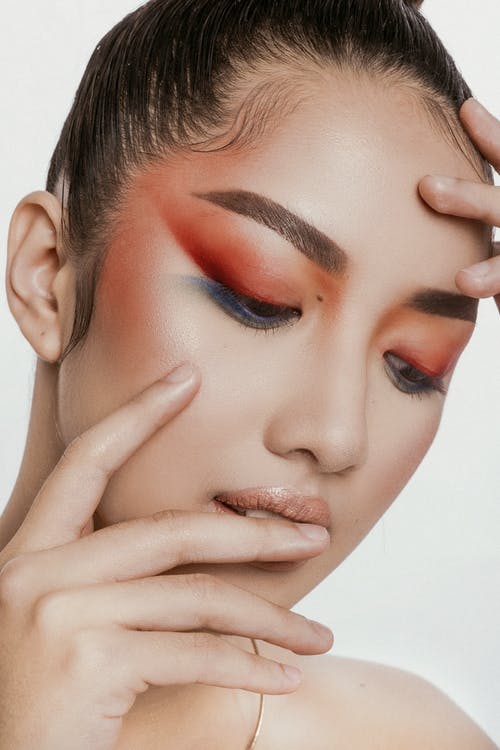When you think of makeup, you usually think of something that is meant to enhance your face positively. It’s supposed to make you look more beautiful and maybe even younger.
However, that’s not why talc is usually included in makeup. Talc has many positive traits when it comes to your skin and its appearance.
It absorbs moisture very well, which helps with dry skin issues while making the product last longer on your face for a more finished look.
Despite these benefits, there are still reasons why you should be wary of talc in your makeup. This article will help answer the question of why is talc bad in makeup?
What is Talc? In The Makeup World

Before answering why talc is bad in makeup, it’s important to understand what talc actually is. Talc is a mineral that is made up of magnesium, silicon, and oxygen.
It’s often used in cosmetics because it helps absorb moisture and gives products a more finished look.
Mined from the ground, this mineral is highly absorbent. As a result, talc has become a sort-after ingredient in many products, including paint, paper industry, food, and pharmaceuticals.
In addition to being found on the things listed above, talc is also used in some makeup products.
Since it’s a loose powder that absorbs moisture very well, you’ll find this ingredient included in your favorite blush or eyeshadow.
It gives these finished looks and makes them last longer on your face, which is why most women love using products that contain it.
So why is it Bad to use Talc in Makeup? Continue reading to find out!
Read: Hair conditioner ingredients to avoid

Why is Talc Bad In Makeup?
Despite its many benefits, there are still some reasons why you should avoid talc in your makeup products.
The biggest reason why you should be careful when it comes to talc in your makeup is because of the health risks associated with it. Here are a few of the negative effects it can have on your body:
1: Talc Contains Asbestos Which Is Linked To Cancer:
One of the main ingredients in talc is asbestos. In fact, a study published by the talc manufacturer Johnson & Johnson found that asbestos was present in 41% of the talc samples that were tested.
Asbestos is a known carcinogen that has been linked to ovarian cancer, lung cancer, and mesothelioma.
Due to these findings, many people are concerned about the safety of using products that contain talc.
While the link between ovarian cancer and asbestos isn’t 100%, it’s still something you should be aware of when considering whether or not to use products that contain talc.
Even though there is still some debate about whether talc actually causes cancer, why take the risk?
You can easily find makeup that doesn’t contain this harmful ingredient, so why continue using products with it in them if you don’t have to?
Read: My aloe vera gel turned pink

2: Talc Can Also Cause Respiratory Problems:
Another issue with talc is that it can cause respiratory problems. This is especially true for people who already have asthma or other respiratory issues.
When talc gets into the air, it can easily be inhaled and cause problems like coughing, wheezing, and shortness of breath.
Inhaling talc can irritate your lungs, leading to inflammation and even pneumonia. If you have any respiratory issues, it’s best to avoid using products that contain talc.
You don’t want to worsen your health problems by breathing in this harmful mineral.
Again, why take the risk? There are plenty of makeup products that don’t contain talc, so there’s no need to use products that do.

3: Talc Can Also Cause Skin Irritation:
In some cases, talc can also cause skin irritation. This is especially true if you have sensitive skin. According to the American Association of Dermatology,
people with sensitive skin should avoid using products that contain talc since it can cause irritation and even rashes on your face or body.
When talc comes into contact with your skin, it can cause redness, itchiness, and even blistering. If you’ve ever had a reaction to a product that contains talc, then you know how unpleasant it can be.
If you’re someone who has sensitive skin, it’s best to avoid products that contain talc. You’ll be less likely to experience any skin irritation if you do.
Read: Shelf life of homemade body butter
4: Talc Can Cake Up in Certain Areas of Your Face:
Another issue with talc is that it can cake up in certain areas of your face, especially if you have dry skin. When talc mixes with the natural oils on your skin, it can form clumps that are difficult to remove.
Not only is this unsightly, but it can also lead to a breakout if you try removing the clumps with your fingers.
If you have dry skin, it’s best to avoid using products that contain talc since they can worsen any existing issues.

Frequently Asked Questions about Talc In Makeup
Why Is Talc Bad In Makeup?
In addition to having asbestos, talc can also cause respiratory issues and skin irritation. Talc has also been linked to cancer and other health concerns, so it’s best to avoid using products that contain this harmful mineral. There are plenty of makeup products available that don’t contain talc, so there’s no need to use a product that could potentially harm your health.
Is Talc Used In Cosmetics?
Yes, talc is a common ingredient in makeup that can be found in foundations and powder products. However, many cosmetic companies have started avoiding using talc in their products due to safety concerns.
Can I Still Use Makeup If It Contains Talc?
It’s up to you. However, if you have any health concerns, it’s best to avoid using products that contain talc. There are plenty of other makeup options available that don’t contain this harmful ingredient.
Talc has many benefits when it comes to looking great, but does the potential damage outweigh the benefits of beauty?
Despite how well-known talcum powder absorbs moisture and gives products a more finished look, there are still plenty of reasons why you should avoid using them in your makeup routine.
Hopefully, this article has shed some light on why is talc bad in makeup and helped you understand why you should avoid talc in your makeup routine.

